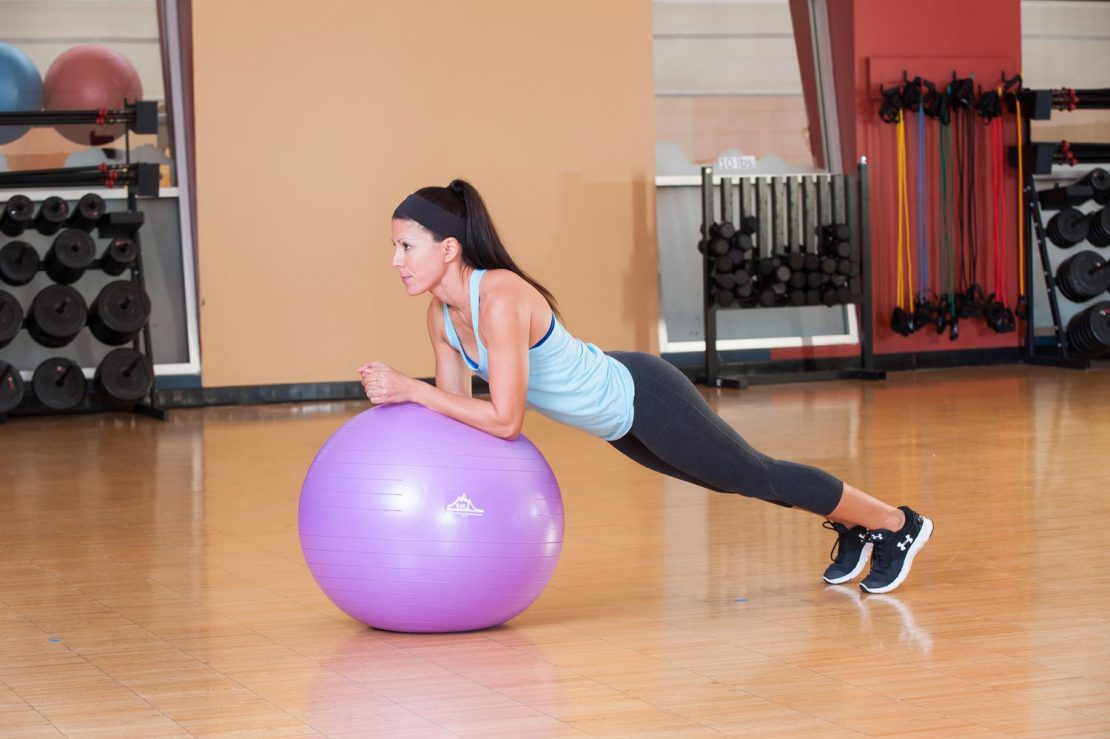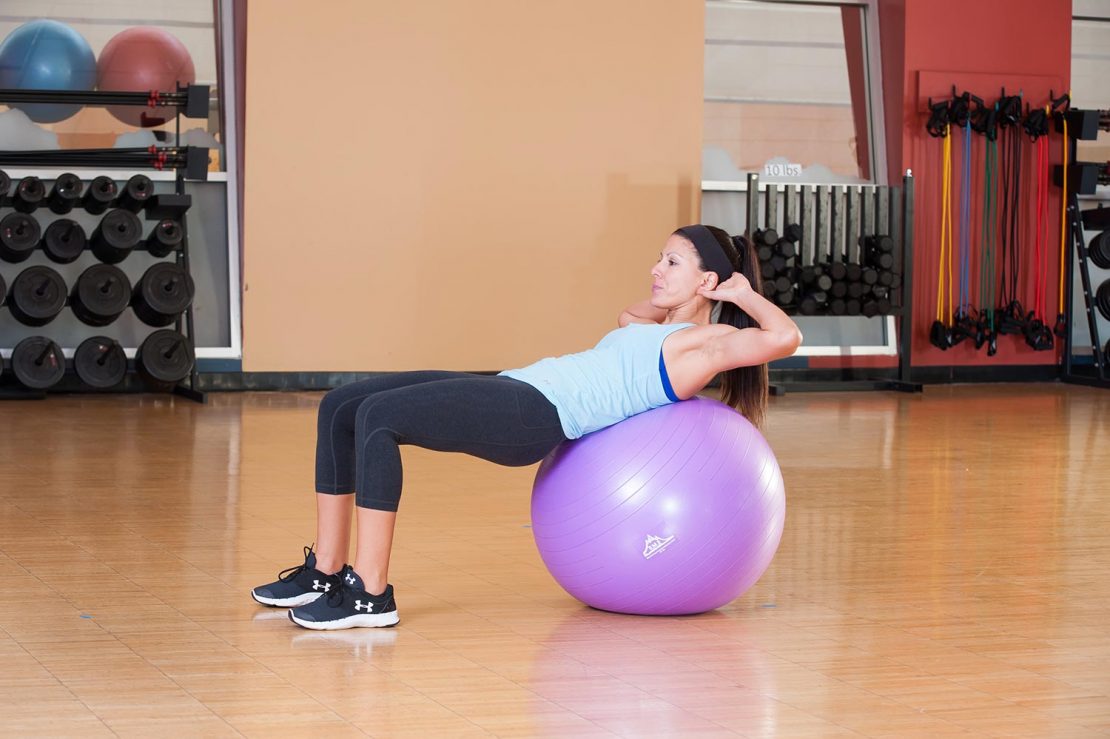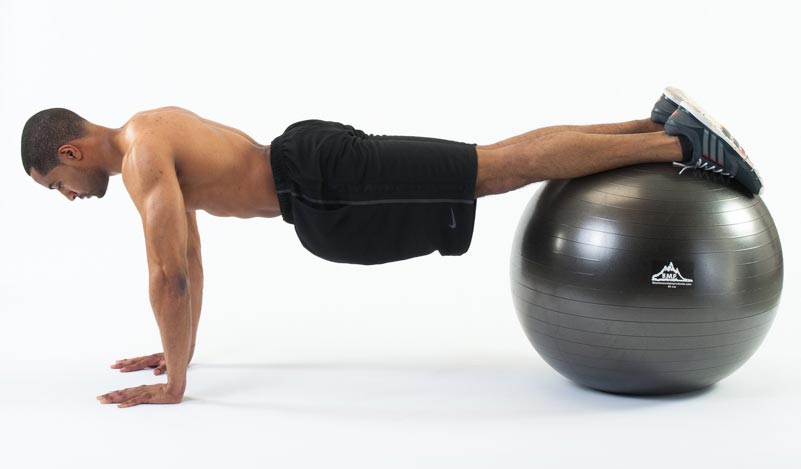
A stability ball is one of the most underrated pieces of workout equipment. It’s known by many names, including yoga ball, gym ball, Pilates ball, and a Swiss ball, which gives you some idea of just how many ways it’s used in different situations.
But is it the right choice for a strong core?
We all tend to gravitate to the shiny machines that promise miraculous results and, while they might be great if you want to build a strong core, you don’t need anything so high-tech. All you need is a stability ball and a killer workout.
It’s simple, really.
A stability ball is a lot more effective than other options. It’s also more cost-effective and fun.
In fact, there’s a lot of research into the efficacy of core workouts with stability balls.
For instance:
- It can offer relief for those with lower back pain
- It helps build strength in your glutes, pelvis, back, and abdomen
- It improves your endurance and performance as an athlete
- It works your body harder than doing the same exercises without a stability ball
With that in mind, we’ve developed our own killer core workout.
The whole routine won’t take you more than fifteen minutes, even if you take a few breaks. Aim to do 8 to 12 reps and repeat for 2 to 3 sets.
Please note that if you have osteoporosis, back problems, or other health concerns, you should consult with your doctor before doing these exercises.
1. Crunches
You’ve probably done regular crunches before, so you’re already prepared for the burn, but adding a stability ball to the mix takes things to a whole new level. Using a stability ball means that you work more muscles than if you were doing the exercise without one because it adds a degree of instability, which your core tries to compensate for.

Start by lying faceup on the ball, with the ball placed under your lower back. Keeping your feet on the floor, hip-width apart, place your hands behind your ears, and get ready…
Activate your core muscles and glutes and slowly begin to crunch your upper body, raising your shoulders off the ball, chin to chest. Then, reverse the action, keeping your core and glutes tight, and lower your upper body back down to the ball.
2. Squat and Reach
Change things up a bit with a standing exercise that involves my personal favorite (that’s me using up my sarcasm quotient): the squat.
Begin by holding the ball in front of you, arms parallel to the floor, knees bent. With a straight back, tighten your abdominal muscles and glutes and start to rotate your trunk, reaching round to your left with the ball. Slowly return to your starting position and repeat on the right.
3. Hamstring Curls
This is an all-over exercise, so you’ll feel it in your hamstrings and glutes, as well as your core.
Start by lying on your back on the floor, with arms resting at your sides and your legs extended. Your heels should rest on the ball, hips off the floor.
As you engage your core, slowly pull the ball closer by bending your knees, then extend your legs to return to the starting position. With every rep, squeeze your hamstrings and glutes and focus on keeping your core tight.
4. Wall Side Crunches
It’s not just your abs that need work. Your obliques (muscles in your sides) also need careful attention. You’ll need a wall for this exercise to help with balance.
Start by lying with your right side on the ball, extend your legs back so that your feet touch the base of the wall. Put your hands behind your head, activate your core and do a side crunch by using your side muscles to move your left elbow towards the wall. After 8 to 12 reps, switch sides.
5. Jackknifes
This one’s all about balance. The exercise starts in a high plank position, wrists should be positioned directly under your shoulders, and the top of your feet should rest on the ball. Engage your core, keep your hips level and use your abdominal muscles to roll the ball closer to you, bending your knees and pulling them towards your chest. Then slowly straighten your legs and return to your starting position.

For those who are just starting out and still need to develop their core muscles, stay in the starting position and hold the high plank for 30 to 60 seconds.
Bonus: Pikes
If you’ve mastered leg tucks and need a new challenge, pikes with a stability ball will provide exactly that!
Start in the high plank position, wrists stacked below your shoulders, tops of your feet resting on the ball. Engage your core and pull your feet towards your arms. This time, though, instead of bending your knees, keep your legs straight and raise your hips high. You will need to keep your core tight to stay balanced. Then, push the ball away from your arms, lower your hips and return to the starting position.
That’s it… Five (or six) simple core exercises make the most of the stability ball’s unique core-strengthening benefits.
Stability Ball FAQ
Before we finish off, let’s answer a few questions that we often ask about core strength, stability, and flexibility.
What are the top benefits of having a strong core?
While the list is a long one, some of the top benefits include:
- Everyday tasks, anything from bending over to tie your shoelaces, sitting on a chair, or turning to look at something behind you, uses your core muscles.
- Physical aspects of your job, if you do any lifting, twisting or standing at work, you call on your core muscles. Even if you spend most of your day at your desk, a weak core can contribute to back pain.
- Back health, lower back pain affects up to 80% of Americans at one time or another in their lives and can, in many cases, be prevented with core strength-building exercises.
- Sports and hobbies, you’ll perform better and have more fun if you can rely on your core. Most sports, from golf to tennis and biking to kayaking, all use your core muscles.
- Balance and stability, your core muscles add stability to your body so that it can move in any direction or allow your body to remain in one spot without losing your balance.
- Posture, if your core is weak, you’ll tend to slouch more, which puts a strain on your spine and impacts your breathing. Over time this can lead to back pain.
Can bouncing on a stability ball strengthen your core?
Yes! And you’ll have fun doing it. By bouncing up and down on a stability ball, you’re activating your core muscles (which includes your lower back muscles, your abdominal muscles, and your deep pelvic muscles). These muscles are essential for balance, movement control, and, of course, good posture. In addition, it also stimulates your smaller stability muscles.
How important is it to have a strong core?
Because your core muscles are central to stabilizing your body and allowing it to move in any direction and maintain balance, a strong core also helps prevent falls and supports your body.
A stability ball is an incredibly versatile, not to mention affordable, piece of gym equipment. It’s almost too easy because just about any exercise you can think of can be incorporated into a stability ball workout. Whether you use a stability ball to perfect your plank or extend your squats, you’ll be increasing the intensity of the workout for your core muscles as well as challenging other muscle groups (not least your quads and glutes).
We’ve picked our top 5 exercises that will deliver great results even if you only have 15 minutes a few times a week. But there are countless other exercises out there that you can do on your stability ball. So, pick an exercise (or two or three) and get started. Great results are just around the corner!